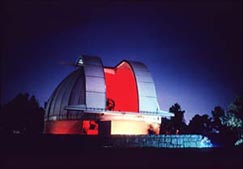 Gemini XII was launched with astronauts Jim Lovell and Buzz Aldrin on November 11 (Veterans Day) in 1966. The spacecraft in question was home to the astronauts for 4 days, during which Buzz Aldrin conducted three spacewalks. After an almost disastrous EVA on Gemini XI, Buzz helped engineer handholds and foot restraints and barely broke a sweat on his walk, indicating astronauts would be able to work outside the spacecraft landing on the moon. As the finale of the Gemini program it was a resounding success.
Gemini XII was launched with astronauts Jim Lovell and Buzz Aldrin on November 11 (Veterans Day) in 1966. The spacecraft in question was home to the astronauts for 4 days, during which Buzz Aldrin conducted three spacewalks. After an almost disastrous EVA on Gemini XI, Buzz helped engineer handholds and foot restraints and barely broke a sweat on his walk, indicating astronauts would be able to work outside the spacecraft landing on the moon. As the finale of the Gemini program it was a resounding success.The spacecraft was checked out after recovery at Johnson Space Center, and transported for display at the Museum of Transport and Technology in Aukland, New Zealand. After many years it returned to the states and was then placed for display at the Goddard Space Flight Center. It was paired at the Visitor Center there nose to nose with a sit-in model. Looking out the window while sitting in the model always reminded me of the Gemini VII - Gemini VI rendezvous in space. In 2005, the Smithsonian was asked to relocate the spacecraft.
The Adler Planetarium in Chicago had undergone a major renovation and wanted a 'capstone' to highlight man's relationship with space. Chicago native Jim Lovell was instrumental in bringing his old spacecraft to his hometown. No longer enclosed in a plexiglas cocoon, the capsule was placed in climate controlled display case designed and built by the Kansas Cosmosphere and Space Center. This new case is a prototype for future displays. Although it may somewhat restrict viewing and photography by boxing in the capsule, the importance of protecting the aging craft become paramount. Similar cases have been constructed for Gemini 3 , Gemini VI and Gemini X, Liberty Bell 7, and Apollo 13.
So to honor its history and for trailblazing a new way to preserve and display these important artificers, Gemini XII is our Spacecraft of the Week.







